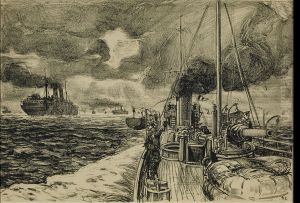Arthur Lismer Paintings
Arthur Lismer was a renowned Canadian painter and member of the Group of Seven, who were known for their revolutionary paintings that defined the Canadian landscape painting tradition in the early 20th century. Born on June 27, 1885, in Sheffield, England, Lismer immigrated to Canada in 1911, settling initially in Toronto. He studied at the Sheffield School of Art and later at the Académie Royale des Beaux-Arts in Antwerp, Belgium.
His early work in Canada included commercial art as well as teaching at the Ontario College of Art (now OCAD University). It was in Canada where Lismer's style evolved significantly as he began to explore the rugged landscapes of the Canadian wilderness, particularly after moving to Toronto where he met other artists who would eventually form the Group of Seven.
Lismer's contribution to the Group of Seven was significant. His vivid and bold painting style captured the raw beauty of regions such as the northeastern shores of Lake Superior and the wilderness of Nova Scotia. He was widely recognized for his ability to depict trees, rocks, and water with a dynamic and spirited brushwork.
Beyond painting, Lismer was also a dedicated educator and advocate for arts education. He served as the vice-principal of the Victoria School of Art and Design in Halifax and later as the educational supervisor at the Art Gallery of Toronto. His influence extended to a generation of young artists through his teaching and his involvement in art education programs.
Lismer's work has been exhibited widely throughout Canada and internationally, and he has been the subject of numerous retrospectives. His legacy includes not only his vibrant landscapes but also his contributions to developing a distinctly Canadian art culture and education system. Arthur Lismer passed away on March 23, 1969, in Montreal, Quebec, but he left behind a body of work that continues to inspire and define Canadian art history.



